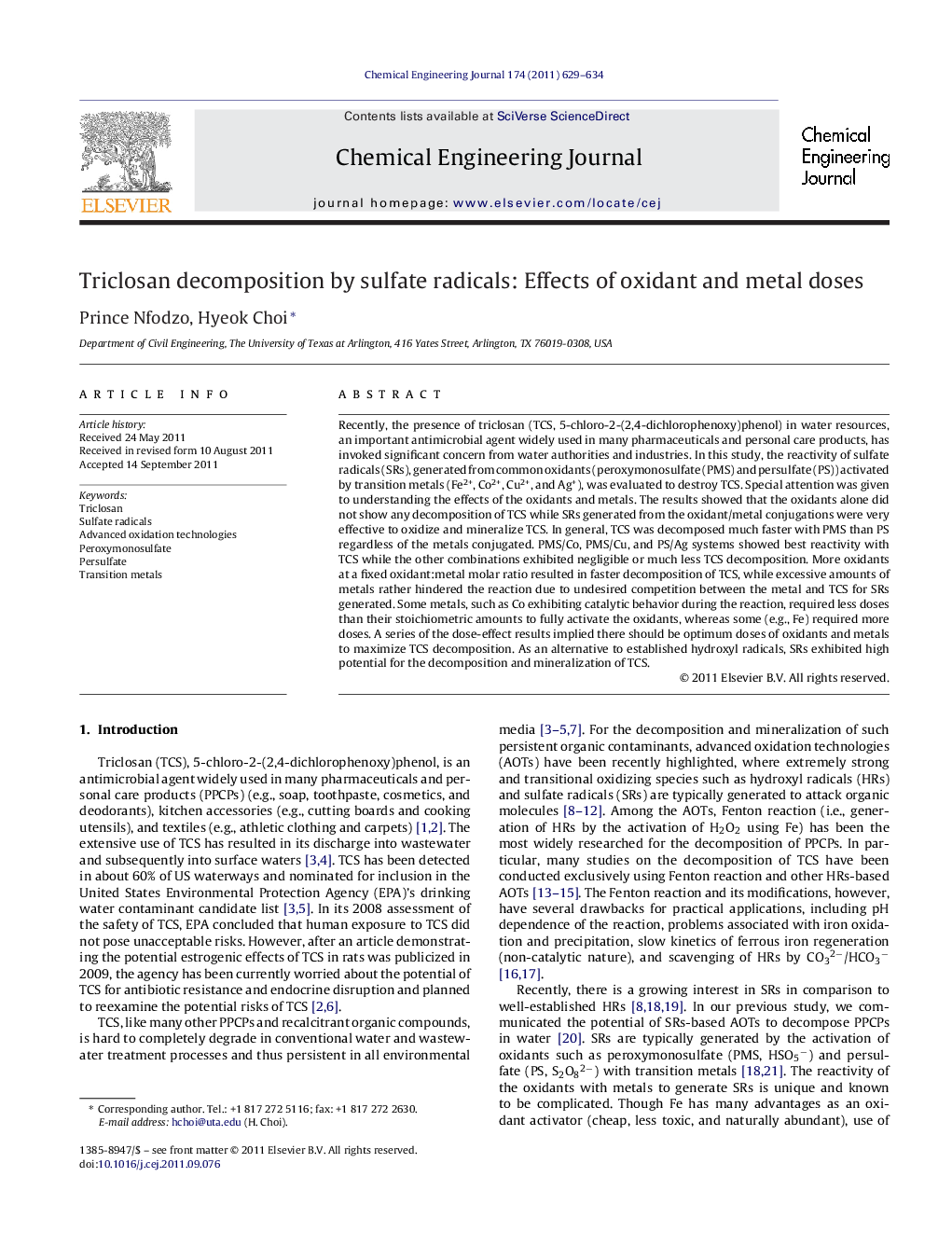| کد مقاله | کد نشریه | سال انتشار | مقاله انگلیسی | نسخه تمام متن |
|---|---|---|---|---|
| 151106 | 456462 | 2011 | 6 صفحه PDF | دانلود رایگان |

Recently, the presence of triclosan (TCS, 5-chloro-2-(2,4-dichlorophenoxy)phenol) in water resources, an important antimicrobial agent widely used in many pharmaceuticals and personal care products, has invoked significant concern from water authorities and industries. In this study, the reactivity of sulfate radicals (SRs), generated from common oxidants (peroxymonosulfate (PMS) and persulfate (PS)) activated by transition metals (Fe2+, Co2+, Cu2+, and Ag+), was evaluated to destroy TCS. Special attention was given to understanding the effects of the oxidants and metals. The results showed that the oxidants alone did not show any decomposition of TCS while SRs generated from the oxidant/metal conjugations were very effective to oxidize and mineralize TCS. In general, TCS was decomposed much faster with PMS than PS regardless of the metals conjugated. PMS/Co, PMS/Cu, and PS/Ag systems showed best reactivity with TCS while the other combinations exhibited negligible or much less TCS decomposition. More oxidants at a fixed oxidant:metal molar ratio resulted in faster decomposition of TCS, while excessive amounts of metals rather hindered the reaction due to undesired competition between the metal and TCS for SRs generated. Some metals, such as Co exhibiting catalytic behavior during the reaction, required less doses than their stoichiometric amounts to fully activate the oxidants, whereas some (e.g., Fe) required more doses. A series of the dose-effect results implied there should be optimum doses of oxidants and metals to maximize TCS decomposition. As an alternative to established hydroxyl radicals, SRs exhibited high potential for the decomposition and mineralization of TCS.
► Triclosan, as one of the most emerging PPCPs, is decomposed by sulfate radicals.
► Triclosan decomposition depends on the configuration of oxidant/metal conjugation.
► Peroxymonosulfate is more effective to decompose triclosan than persulfate.
► Optimum doses of oxidants and metals exist to maximize the decomposition.
► Sulfate radicals-based AOTs should be more highlighted and researched.
Journal: Chemical Engineering Journal - Volume 174, Issues 2–3, 1 November 2011, Pages 629–634